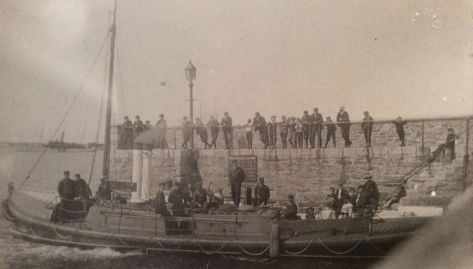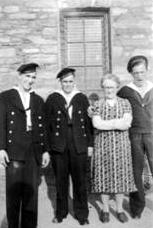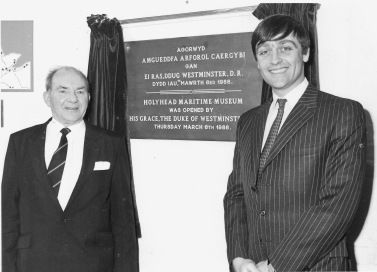The Holyhead Maritime Museum currently occupies the building that was probably the first lifeboat station in Wales. It was built at Newry Beach by the Admiralty in 1857 at a cost of about £400 and shares similar architectural features with the Holyhead Market Hall, built two years previously. The house was initially equipped with a 30ft x 7ft self righting lifeboat with 10 oars at a cost of about £161. This lifeboat arrived at the station in January 1858 to be managed by the recently formed RNLI. From first arriving at Holyhead and up to the time in 1864 when she was replaced by a larger vessel, this rowing lifeboat saved 83 lives in only 18 rescue missions.

The building was extended in 1888 to provide for an additional lifeboat fitted to a horse drawn carriage allowing it to be transported for launching at a beach closer to an incident. In 1897 Holyhead acquired a steam driven lifeboat the ‘Duke of Northumberland’. This vessel could not be accommodated in the lifeboat station. However, the building continued to house the traditional rowed lifeboats and became known as Lifeboat Station No. 2. The ‘Duke of Northumberland’ took part in a heroic rescue in February 1908 when she was called to the assistance of the SS Harold, a small steamer experiencing extreme difficulties in a storm force gale. The Coxswain, William Owen, was awarded the RNLI Gold Medal and his crew of ten all received Silver Medals for the highly hazardous rescue of the steamship’s nine man crew.

The lifeboat station closed in 1930 and was taken over by the Royal Naval Reserve. It was later utilised as a roller skating ring until acquired by Mrs. Hughes, Bryngwyn, during the late thirties as a cafe. With the outbreak of war and the arrival in 1940 of elements of the Royal Netherlands Navy, the cafe was requisitioned and used as as a ‘NAFFI’ by these allied servicemen. To provide protection from bombing, one of seventeen air raid shelters was built alongside the cafe. After Mrs. Hughes retired the building remained as a cafe before being converted into a wine bar bistro.

Holyhead has a rich maritime history spanning many centuries and with this in mind a group of keen volunteers decided in 1982 to organise a display of maritime artifacts at the Coastguard Rescue Centre, Holyhead. It proved a great success and it was decided to look into having a permanent Maritime Museum in the town.

The Holyhead Maritime Museum group was formed in 1984 and initially took on the lease of the recently closed St. Elbod’s Church. After a great amount of work and effort to transform the building, the museum was opened by the Duke of Westminster in March 1986. At the end of the lease the museum needed a new location and Stena Line kindly agreed to lease out the now empty Old Lifeboat House.

Following a successful Heritage Lottery Grant, the building was converted for use as a Maritime Museum. The facility was formally opened by Mr. Nigel Cureton of Stena Line in March 1999. The adjacent Air Raid Shelter was later adapted to house the permanent ‘Holyhead at War’ exhibition. In 2004 alterations took place to establish a restaurant business, leased to a private proprietor – The Harbourfront Bistro.

The Holyhead Maritime Museum continues to successfully operate in this iconic building with its mission to tell the centuries old story of Holyhead’s rich maritime heritage. With over 5,000 visitors each year the museum makes a significant contribution to the tourism economy of the town. The museum is also instrumental in ensuring that significant events in the town’s past are properly and respectfully remembered and commemorated.
From research undertaken by Graham van Weert
© Holyhead Maritime Museum
Well done Graham, excellent contribution. Peter Scott Roberts
LikeLiked by 1 person
Well done Graham, thanks for sharing the history of the building. Edwyn Hughes.
LikeLiked by 1 person
Very interesting Graham thank you.Carys L Roberts.
LikeLiked by 1 person